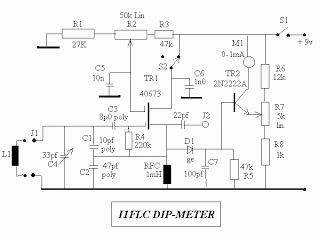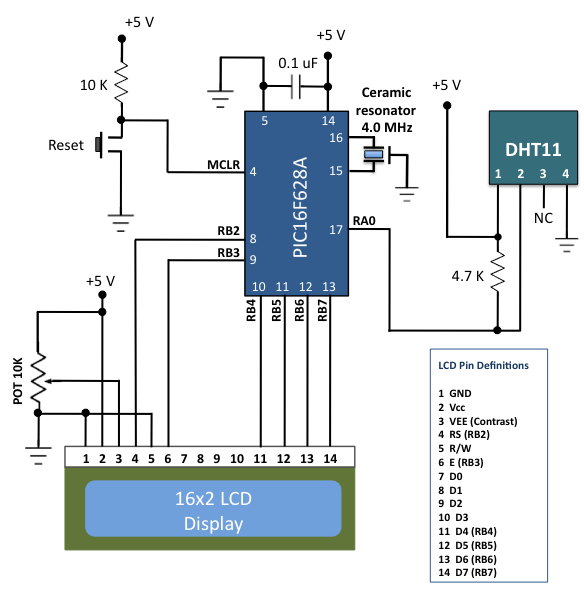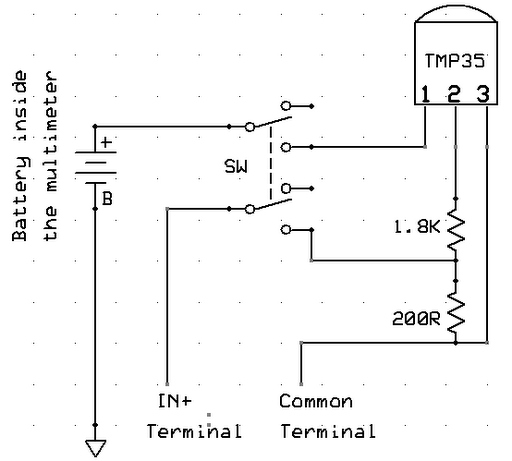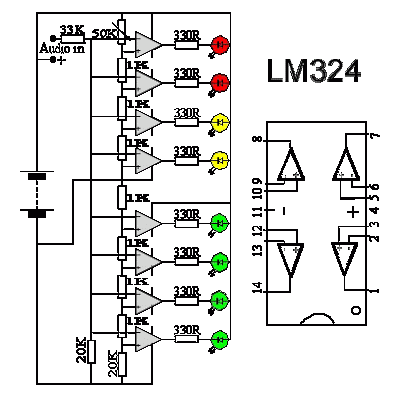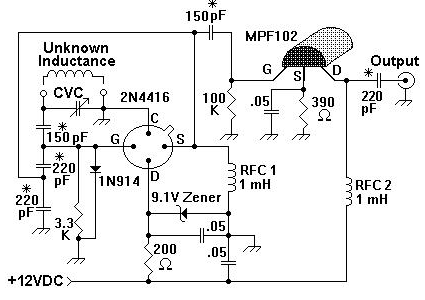
Meter Tester
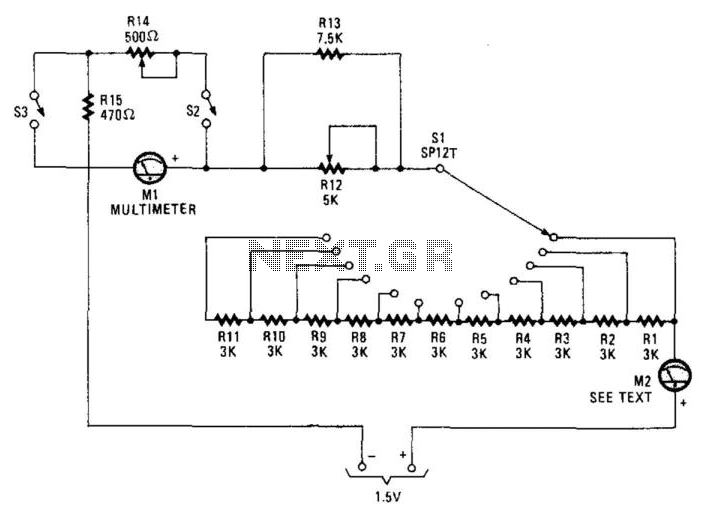
This unit utilizes switches and resistors to offer multiple current ranges. It enables testing of various meters available at surplus outlets without risking damage to sensitive movements when the internal resistance or full-scale current of the unit is unknown. Ml is a multimeter configured to measure current, while M2 is the meter under test. Begin with SI set to maximum resistance and S2 open; gradually decrease the resistance setting of SI, fine-tuning with R12 until M2 indicates full scale. Subsequently, read Ml to determine the full-scale current for the unknown meter. Since the meters are connected in series, the same current flows through both. Next, close S2 and adjust R14 and R15 until M2 reads exactly mid-scale, ensuring Ml reflects the maximum current previously identified for M2. Half of the current flows through M2, while the other half passes through R14 and R15. The voltage drop is identical across both the meter and R14 and R15, as they are in parallel. Therefore, the total resistance of Ru and R15 equals the internal resistance of meter M2. If the internal resistance of M2 is less than 470 ohms, set R14 to maximum resistance and close S3, then readjust R14. Both R14 and R12 should be linear-taper potentiometers.
This circuit utilizes a combination of switches (S1, S2, S3) and resistors (R12, R14, R15, Ru) to create a flexible testing environment for multimeters. The design allows for safe measurement of unknown meter parameters by employing a series connection that ensures identical current flow through both the multimeter (Ml) and the meter under test (M2).
The use of linear-taper potentiometers for R12, R14, and R15 enhances the precision of resistance adjustments, allowing for fine-tuning of the circuit to achieve the desired readings. The initial setup involves setting SI to its maximum resistance and keeping S2 open, which establishes a baseline for further adjustments. As resistance is decreased in SI, the circuit is calibrated until M2 registers full scale, which indicates that the maximum current for the unknown meter has been established.
Once S2 is closed, the adjustments of R14 and R15 become crucial in obtaining a mid-scale reading on M2 while maintaining the same current reading on Ml. This step is essential for determining the internal resistance of M2, which can be calculated based on the known values of Ru and the resistances of R14 and R15. If M2's internal resistance is found to be below 470 ohms, R14 is adjusted to its maximum resistance, and S3 is closed, allowing for further calibration of the circuit.
This configuration is particularly advantageous for testing meters with unknown specifications, as it safeguards sensitive components and provides a straightforward method for determining operational parameters. The careful selection and arrangement of components ensure that the circuit operates efficiently and accurately, making it a valuable tool for electronics testing and measurement. This unit uses switches and resistors to provide a number of current ranges. It allows you to test most of the meters availabl e at surplus outlets, and without damaging the sensitive movements when you have no idea of internal resistance or full-scale current of the unit. Ml is a multimeter set to measure current, and M2 is the meter-under-test. Starting with SI set at the maximum resistance and S2 open, decrease the resistance setting of SI, fine tuning with R12, until M2 reads full scale.
Then, read Ml. It will tell you the full-scale current for the unknown meter. As the meters are connected in series, the same current flows through both. Now, close S2 and adjust R14 and R15 until M2 reads exactly mid-scale and Ml reads the same current as determined earlier to be the maximum current for M2. Half the current is flowing in M2 and half is going through R14 and R15. The voltage drop is the same across the meter and R14 and R15, because they"re in parallel. Thus, the sum of the resistance of Ru and ii5 is the same as the internal resistance of meter M2. If the internal resistance of M2 is less than 470, set R14 at maximum resistance and close S3. Readjust R14. Both R14 and R12 should be linear-taper potentiometers.
This circuit utilizes a combination of switches (S1, S2, S3) and resistors (R12, R14, R15, Ru) to create a flexible testing environment for multimeters. The design allows for safe measurement of unknown meter parameters by employing a series connection that ensures identical current flow through both the multimeter (Ml) and the meter under test (M2).
The use of linear-taper potentiometers for R12, R14, and R15 enhances the precision of resistance adjustments, allowing for fine-tuning of the circuit to achieve the desired readings. The initial setup involves setting SI to its maximum resistance and keeping S2 open, which establishes a baseline for further adjustments. As resistance is decreased in SI, the circuit is calibrated until M2 registers full scale, which indicates that the maximum current for the unknown meter has been established.
Once S2 is closed, the adjustments of R14 and R15 become crucial in obtaining a mid-scale reading on M2 while maintaining the same current reading on Ml. This step is essential for determining the internal resistance of M2, which can be calculated based on the known values of Ru and the resistances of R14 and R15. If M2's internal resistance is found to be below 470 ohms, R14 is adjusted to its maximum resistance, and S3 is closed, allowing for further calibration of the circuit.
This configuration is particularly advantageous for testing meters with unknown specifications, as it safeguards sensitive components and provides a straightforward method for determining operational parameters. The careful selection and arrangement of components ensure that the circuit operates efficiently and accurately, making it a valuable tool for electronics testing and measurement. This unit uses switches and resistors to provide a number of current ranges. It allows you to test most of the meters availabl e at surplus outlets, and without damaging the sensitive movements when you have no idea of internal resistance or full-scale current of the unit. Ml is a multimeter set to measure current, and M2 is the meter-under-test. Starting with SI set at the maximum resistance and S2 open, decrease the resistance setting of SI, fine tuning with R12, until M2 reads full scale.
Then, read Ml. It will tell you the full-scale current for the unknown meter. As the meters are connected in series, the same current flows through both. Now, close S2 and adjust R14 and R15 until M2 reads exactly mid-scale and Ml reads the same current as determined earlier to be the maximum current for M2. Half the current is flowing in M2 and half is going through R14 and R15. The voltage drop is the same across the meter and R14 and R15, because they"re in parallel. Thus, the sum of the resistance of Ru and ii5 is the same as the internal resistance of meter M2. If the internal resistance of M2 is less than 470, set R14 at maximum resistance and close S3. Readjust R14. Both R14 and R12 should be linear-taper potentiometers.
